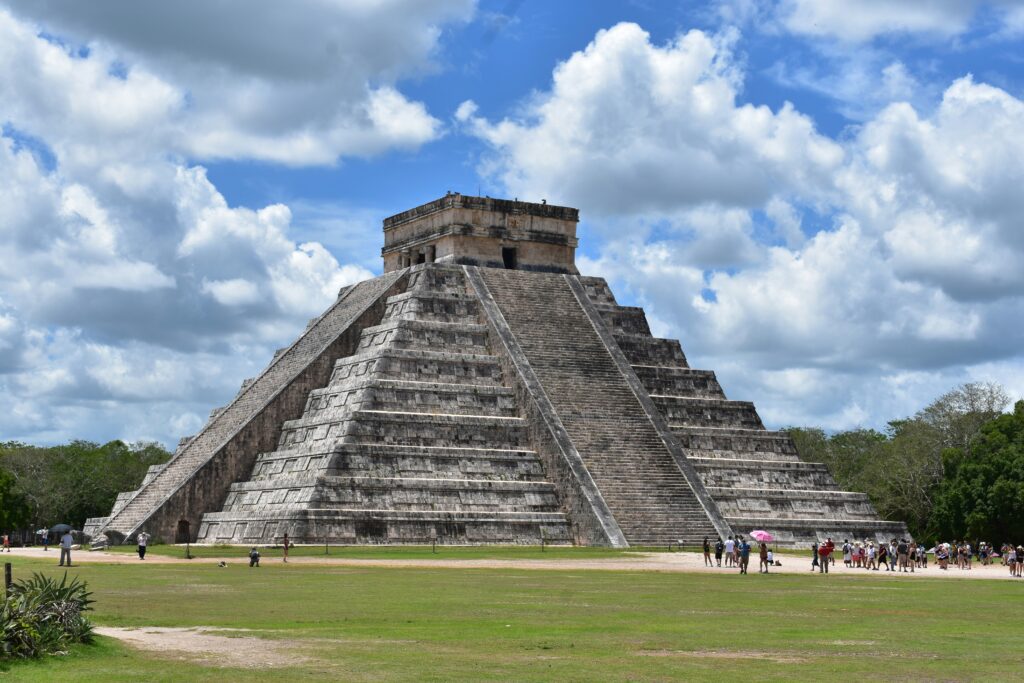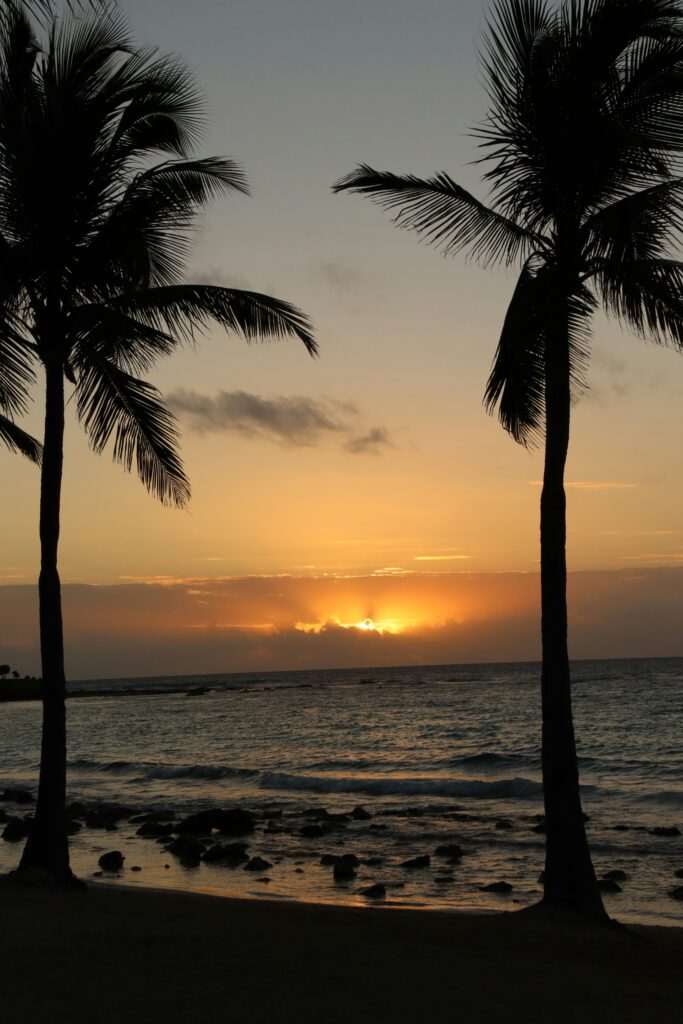Mexico, a land where ancient civilizations whisper through crumbling pyramids and azure waves kiss sun-drenched shores, beckons adventurers with its intoxicating blend of history, culture, and natural beauty. From the bustling streets of Mexico City to the tranquil beaches of the Riviera Maya, this vibrant country offers a kaleidoscope of experiences that will captivate your senses and ignite your spirit of exploration.
Must-see attractions



- Chichen Itza: Stand in awe before the majestic El Castillo pyramid, a testament to Mayan ingenuity and astronomical precision.
- Frida Kahlo Museum: Step into the colorful world of Mexico’s most iconic artist at her former home, La Casa Azul, in Mexico City.
- Copper Canyon: Embark on a thrilling train journey through a network of canyons four times larger than the Grand Canyon.
- Tulum Ruins: Explore ancient Mayan ruins perched dramatically on cliffs overlooking the Caribbean Sea.
- Monarch Butterfly Biosphere Reserve: Witness the breathtaking spectacle of millions of monarch butterflies in their winter sanctuary.
Popular cities or regions





- Mexico City: A pulsating metropolis where pre-Hispanic treasures mingle with cutting-edge cuisine and vibrant street art.
- Oaxaca: Immerse yourself in indigenous traditions, savor complex moles, and wander through colorful markets in this cultural heartland.
- Cancun and Riviera Maya: Indulge in sun-soaked beaches, world-class resorts, and crystal-clear cenotes perfect for snorkeling.
- Guanajuato: Lose yourself in the winding, technicolor streets of this charming colonial city, birthplace of muralist Diego Rivera.
- Los Cabos: Where the desert meets the sea, offering luxurious resorts, whale watching, and spectacular rock formations.
Suggested itineraries
- Cultural Explosion (10 days):
- Mexico City (4 days): Explore Teotihuacan, Frida Kahlo Museum, and Zocalo
- Puebla (2 days): Admire colonial architecture and sample mole poblano
- Oaxaca (4 days): Visit Monte Alban ruins, mezcal distilleries, and artisan villages
- Yucatan Adventure (2 weeks):
- Cancun (3 days): Relax on beaches and visit underwater museum
- Chichen Itza (1 day): Explore the ancient Mayan city
- Merida (3 days): Discover colonial charm and nearby cenotes
- Tulum (4 days): Visit ruins, snorkel in cenotes, and enjoy beach life
- Cozumel (3 days): World-class diving and snorkeling
- Pacific Coast Escapade (1 week):
- Puerto Vallarta (3 days): Beach time, old town exploration, and sunset sailing
- Sayulita (2 days): Surf lessons and bohemian vibes
- Guadalajara (2 days): Tequila tasting and mariachi performances
Remember, these itineraries are just starting points. Feel free to adjust them based on your interests, travel style, and the length of your trip. Mexico’s diverse landscapes and rich cultural tapestry offer endless possibilities for creating your perfect adventure!
Cultural and Social Connections
- Festivals: Mexico’s culture is rich in celebrations. Major festivals like Día de los Muertos (Day of the Dead) and Cinco de Mayo reflect the country’s deep cultural roots. If your visit coincides with these events, consider joining the festivities.
- Art and Architecture: Mexico is home to incredible pre-Hispanic ruins like Chichén Itzá, Teotihuacán, and Palenque, as well as colonial cities like Guanajuato and San Miguel de Allende. Museums like the Frida Kahlo Museum and Palacio de Bellas Artes in Mexico City are also must-sees.
Language and Culture
- Language: The official language is Spanish, and while many people in tourist areas speak English, it’s helpful to know some basic Spanish phrases. Common greetings like “Hola” (Hello), “Gracias” (Thank you), and “¿Cuánto cuesta?” (How much does it cost?) will go a long way.
- Cultural Etiquette: Mexicans are generally warm and welcoming, but it’s important to observe cultural norms. Greeting people with a handshake or a polite nod is customary. In social situations, especially with friends and family, a hug or kiss on the cheek may be appropriate.
- Respecting Traditions: Mexico is deeply rooted in traditions and celebrations. For example, Day of the Dead (Día de los Muertos) is one of the country’s most important festivals, honoring deceased loved ones. Be respectful when observing religious or cultural events.
Travel Documents
- Visa: Many nationalities, including those from the U.S., Canada, the EU, and Australia, do not need a visa for short stays of up to 180 days for tourism purposes. However, you will need to fill out a Forma Migratoria Múltiple (FMM) or Mexican Tourist Card upon arrival, either at the airport or online.
- Passport: Ensure your passport is valid for at least six months beyond your date of entry. Carry a few photocopies of your passport, as you may need them for certain activities or in case of loss.
- Travel Insurance: Travel insurance is strongly recommended, as it can cover unexpected medical expenses, trip cancellations, and loss of belongings. Mexico has both public and private healthcare systems, but private care can be expensive for tourists without insurance.
Entry Requirements
- COVID-19: While Mexico currently has relaxed entry restrictions related to COVID-19, it’s a good idea to check the latest travel advisories regarding vaccinations or tests. Some resorts or accommodations might have specific rules.
- Customs: Be mindful of what you’re allowed to bring into the country. Personal items are generally allowed, but there are limits on alcohol, tobacco, and certain food products. It’s best to declare any large sums of money.
Health Conditions
- Vaccinations: Ensure your routine vaccinations (such as measles, mumps, rubella, and tetanus) are up to date. Hepatitis A, Typhoid, and Hepatitis B vaccines are recommended, particularly if you plan to visit rural areas or eat street food. Malaria prevention might be needed in some rural regions, and protection against dengue fever (transmitted by mosquitoes) is crucial in certain parts of the country.
- Drinking Water: Tap water in Mexico is not safe to drink. Stick to bottled or filtered water, and avoid ice in drinks unless you’re sure it’s from purified water. Many hotels and restaurants use purified water for ice.
- Pharmacies: Pharmacies are widely available, and most sell over-the-counter medications for minor health issues. In case of more serious health concerns, Mexico has private hospitals with good healthcare services.
- Healthcare: Mexico’s healthcare system includes both private and public services. If you have travel insurance, seek private care, as public hospitals may have longer wait times. In case of an emergency, dial 911 for medical assistance.
Currency and Payment Methods
- Local Currency: The currency in Mexico is the Mexican Peso (MXN). ATMs are widely available in most towns and cities, and currency exchange services can be found in airports, banks, and tourist areas.
- Credit and Debit Cards: Credit and debit cards (Visa and Mastercard) are accepted in most restaurants, hotels, and stores in urban and tourist areas. However, in rural areas or small towns, cash is preferred, so it’s important to carry enough pesos with you.
- Tipping: Tipping is common in Mexico. In restaurants, a 10-15% tip is customary. For hotel staff, tipping a few pesos for bellhops or housekeeping is appreciated. For taxis, rounding up the fare is a nice gesture.
Safety
- Pickpocketing and Scams: In tourist-heavy areas, be cautious of petty crimes such as pickpocketing and scams. Keep an eye on your belongings and avoid flashing valuables like expensive phones or cameras.
- Travel Safety: While many parts of Mexico are safe for tourists, some regions have higher crime rates. Stay informed by checking travel advisories and avoid traveling to areas marked as high-risk. Stick to well-known tourist areas and avoid walking alone at night, especially in unfamiliar neighborhoods.
- Emergency Numbers: The general emergency number in Mexico is 911 for police, fire, or medical assistance.
Weather and Clothing
- Seasons:
- Winter (December to February): Winters are mild in most of Mexico, making it an ideal time to visit destinations like Mexico City, Oaxaca, or the Yucatán Peninsula.
- Summer (June to August): Summers can be hot, especially in coastal regions like Cancún and Puerto Vallarta, and this is also the rainy season in many parts of the country. Coastal areas may be affected by hurricanes from June to November, so check the weather forecasts.
- Dry and Rainy Seasons: Mexico experiences a dry season from November to April and a rainy season from May to October. Rain can be heavy in certain regions, especially in the south, so plan accordingly.
- Clothing: Pack lightweight clothing for warmer regions, along with sunblock and hats for protection against the sun. For mountainous areas or Mexico City, which can get cooler at night, bring a light jacket. If you’re visiting during the rainy season, don’t forget an umbrella or rain jacket.
Transportation
- Air Travel: Mexico has a well-developed domestic flight network, and budget airlines like Volaris and Interjet offer affordable options for traveling between cities.
- Buses: Mexico’s bus network is extensive and reliable. ADO, Estrella Blanca, and ETN offer comfortable long-distance travel. First-class buses are safe, clean, and affordable.
- Taxis and Ridesharing: Taxis are widely available in cities, but it’s best to ask your hotel or a trusted source to call one for you or use an authorized taxi stand. Uber and DiDi are commonly used in many Mexican cities and are safer than street taxis.
- Car Rental: Renting a car is a good option for exploring rural areas or off-the-beaten-path destinations. Just be aware of road conditions, traffic rules, and always opt for full insurance.
Accommodation
- Hotels: Mexico offers a wide range of accommodations, from luxury resorts to budget-friendly hostels. Popular tourist areas like Cancún, Mexico City, and Playa del Carmen have many choices for all budgets.
- Airbnb and Vacation Rentals: Vacation rentals are popular, especially in urban and coastal regions. These are ideal for families or longer stays and can give you a more local experience.
- Hostels: For budget-conscious travelers, hostels are available in major cities and tourist areas, offering both dormitory-style and private rooms.
Emergency Numbers
- Police: Dial 911 for police emergencies.
- Ambulance: For medical emergencies, also dial 911.
- Fire: Use 911 for fire-related emergencies.
- Tourist Assistance: Mexico has a dedicated Tourist Police in some areas, particularly in tourist destinations. They can help with safety issues or provide assistance in English.
Internet and Telephony
- SIM Cards: You can purchase local SIM cards from providers like Telcel, Movistar, or AT&T at airports, telecom stores, or convenience stores. Prepaid plans with data are affordable and useful for staying connected.
- Wi-Fi: Wi-Fi is commonly available in hotels, cafes, and restaurants, especially in cities and tourist areas. Public Wi-Fi is also accessible in many places, but ensure you’re using a secure connection.
- Electricity: Mexico uses 110V and plug types A and B (the same as in the U.S.). If you’re coming from a country that uses a different voltage or plug type, bring an adapter.
Working Hours and Public Holidays
- Business Hours: Most businesses open around 9:00 a.m. or 10:00 a.m. and close around 6:00 p.m. In smaller towns, some shops may close for a midday break.
- Public Holidays: Mexico celebrates several national holidays that can impact business hours, including:
- Independence Day (September 16)
- Day of the Dead (November 1-2)
- Christmas (December 25)
- Revolution Day (November 20) On these days, many businesses, banks, and public services may be closed.
Tipping
- Tipping is customary in Mexico, and a small tip is appreciated for many services. In restaurants, leave a 10-15% tip for good service. For hotel staff, tipping bellhops and housekeeping staff a few pesos per service is the norm. Tipping taxi drivers is not mandatory but appreciated if they assist with luggage.
Healthcare and Emergencies
- Hospitals: Mexico offers both public and private hospitals. Public hospitals can be more crowded, so if possible, opt for private healthcare facilities, especially if you have travel insurance.
- Pharmacies: Pharmacies are everywhere in Mexico, offering over-the-counter medications and prescription drugs. Many are open 24/7 in larger cities.

